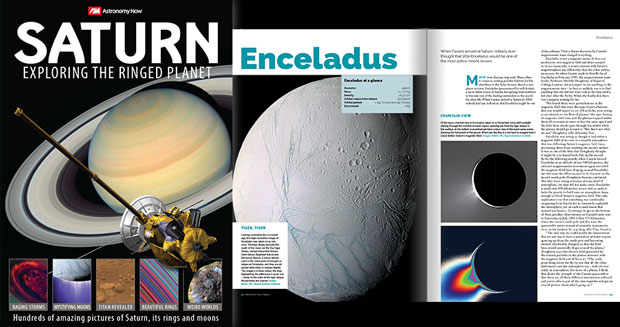
NASA’s Cassini spacecraft captured this view of Saturn’s moon Enceladus that shows wrinkled plains that are remarkably youthful in appearance, being generally free of large impact craters.
When viewed with north pointing up, as in this image, the day-night boundary line (or terminator) cuts diagonally across Enceladus, with Saturn approaching its northern summer solstice. The lit portion on all of Saturn’s large, icy moons, including Enceladus (504 kilometres or 313 miles across) and Saturn itself, is now centered on their northern hemispheres. This change of season, coupled with a new spacecraft trajectory, has progressively revealed new terrains compared to when Cassini arrived in 2004, when the southern hemisphere was more illuminated.
This view looks toward the leading hemisphere of Enceladus. The image was taken in green light with the Cassini spacecraft narrow-angle camera on 14 January 2016.
The view was acquired at a distance of approximately 79,000 kilometres (49,000 miles) from Enceladus. Image scale is 470 metres (1,540 feet) per pixel.
Saturn: Exploring the Ringed Planet
Find out more about Saturn and its moons in this 196-page special edition from Astronomy Now. Order from our online store.




